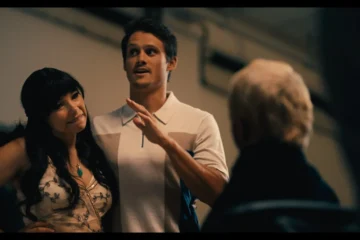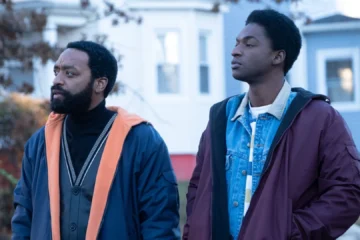Rule of Two Walls Review :
More than 900 days since Russia first launched its invasion and unprovoked war of aggression against Ukraine, aimed at annexing territory and erasing Ukrainian identity, the conflict rages on — but in terms of achieving his strategic objectives, President Vladimir Putin has already lost.
In seeking to topple Ukraine’s democratically elected government, dismantle its statehood, and assimilate any surviving civilians into Russia, the Kremlin made its war an existential conflict for Ukrainians, who’ve demonstrated extraordinary resilience, passion, and unity in defending their sovereign nation. In threatening to impose its autocratic regime, Russia has succeeded only in deepening Ukrainians’ determination to protect their democracy and forge a political, economic, and cultural identity outside of a post-Soviet Russian sphere of influence.
Ironically, it is the folly of Putin’s imperial ambition that has most effectively rallied leaders and civilians to the cause of Ukrainian nationalism and the unrelenting brutality of his assault that has most strengthened solidarity for Ukraine from Western and European powers. It speaks to the spirit of resistance still motivating Ukrainians in the present moment that, for all those who fled their homes and lived outside the country as refugees, millions of civilians defiantly chose to remain in Ukraine, fighting to defend their homeland.
When he flew to Warsaw in April 2022, a little over a month after Russia’s full-scale invasion, Ukrainian-American documentary filmmaker David Gutnik intended to make a film about people displaced by the conflict. After learning of artists who’d stayed behind in the western city of Lviv, near Poland, his focus shifted, and he found himself crossing the border with a camera in hand.
“Rule of Two Walls” started shooting that month and finished production in Kyiv that November, amid blackouts caused by attacks on Ukraine’s power supply and other critical infrastructure. In that early stage of the conflict, as Russian forces bombarded cities and laid waste to urban areas, the wailing of air raid sirens became so commonplace that civilians would often choose not to seek refuge in bomb shelters. If each day might be their last, they reasoned, they did not want to spend it running for cover, bracing for impact.
The title refers to this fatalistic thought process and the liminal reality that gave rise to it: to stay safe without leaving home and maintain at least two walls between oneself and the blast impact. Living in war, distinct from simply surviving it, makes such difficult-to-imagine compromises inevitable. What’s extraordinary about Gutnik’s film is what he captures of daily life under such conditions: how, even as bombs fall and missiles arc overhead, life goes on. How can it not?
To Lviv, even getting up in the morning is a form of resistance, and a beautiful one — which is why Gutnik, who blends narrative and documentary techniques throughout his film, chooses to open “Rule of Two Walls” with a scene of two lovers in bed, sharing a lighthearted moment before the sirens sound. In his focus on musicians and artists who’ve found a way to create amid the destruction, processing their anger and grief through making art, Gutnik’s main exploration is of the continued role that Ukrainian culture plays in sustaining its society and national spirit, of the manner in which staying true to one’s artistic instincts is a signifier of profound dedication to Ukrainian cultural identity; of individual expression as collective resistance.
“Culture is an action and product of a people,” explains Lyana Mytsko, the director of the Lviv Municipal Arts Center, which has functioned as both a shelter and an exhibition space during the conflict. “So it is not possible to have a nation and not have a culture. When Putin says we have no culture, he means we have no nation.” It is for this reason that Russian military forces have repeatedly targeted churches, museums, and monuments during their assault on Ukraine, aiming to erase the country’s cultural heritage along with its history as an independent state, in violation of international law.
Gutnik’s film shows us the Donetsk Regional Drama Theatre in Mariupol, destroyed in Russian airstrikes that killed the 600 people sheltering there, despite “Дети,” the Russian word for children, painted on the ground at its front and rear entrances, large enough for satellites to see. Diana Berg, one actress and activist who’d studied there, speaks about continuing her work in Lviv, struggling to depict through her art “a different Mariupol” than what ruins of it still exist. For many of them, she explains, making art is a means of “regaining control,” of asserting the right of Ukrainians to exist in defiance of Russia’s violent efforts to not only wipe them off the map but blot out their history.
Another remarkable sequence, without a word of dialogue, visits Kyiv’s city center, where civilians gradually surround a statue of Taras Shevchenko, Ukraine’s national poet, with sandbags so as to protect it from Russian missile strikes. The effect is haunting and strangely hopeful , as if this monument is temporarily ceding ground to a more modern art installation established in its honor. This mirrors an earlier sequence where artists explain that walls of Ukrainian buildings were once detailed with interior murals before they were covered up with white plaster during the Soviet era. It’s only amid the recent destruction that many such murals have been uncovered and restored, a process of literally chipping away at colonialist historiography.
Gutnik’s ensemble soon expands to include members of his crew. Like others interviewed in “Rule of Two Walls,” the film’s cameraman, producer, and sound recordist are artists working to make sense of the war, and their inclusion in the narrative feels once honest and compelling. Rather than identifying each of the interviewees or introducing locations as they first appear, Gutnik keeps the film’s narrative progression steady and unsettled, positioning his film as a ground-level dispatch from the conflict’s frontlines.
Volodymyr Ivanov, the film’s director of photography, met Gutnik after traveling from Bucha, where he had been transporting and taking bodies out of bags; near Kyiv, this commuter town was the site of the mass murder of Ukrainian civilians and prisoners of war by the Russian Armed Forces. War is “an absence of everything,” Ivanov explains, confessing he has seen too much to feel anything but senseless. “Rule of Two Walls” travels to Bucha and shows us what he’s seen, photographing burnt and tortured corpses; such images are both horrific and essential to grasping the reality of the death and destruction inflicted on Ukraine, the courage of those fighting to defend their country, and the inescapable nature of such atrocity for all those who bear witness to it.
Amid all the tragedy, Gutnik finds triumph as well through the artists whose potent and often painfully beautiful work he showcases, such as drawings by the anonymous Kinder Album that turn the war-time terrors inflicted upon women and children into grim, outraged storybook illustrations or the anguished lyrics (ex. “Didn’t get to love enough, to live long enough, and I’m not sorry”) that metal rapper Stepan Burban (aka Palindrom) unleashes during a studio recording session.
The film climaxes at a concert in the fall of 2022, where Burban and his band perform for a packed audience of young Ukrainians who not only echo his songs of protest but amplify them in a galvanized chorus of collective defiance. But its final shot is perhaps even more striking: involving a little girl on a bicycle, making her way past burned-out freight train tankers, it’s a quiet, matter-of-fact moment that speaks volumes about Ukraine’s resilience, its history, its reality, its people, and their promise.
“Rule of Two Walls” opens at DCTV’s Firehouse Cinema in New York on Aug. 16; Monument Releasing will then roll the film out to select cities ahead of its VOD release on Nov. 12.




